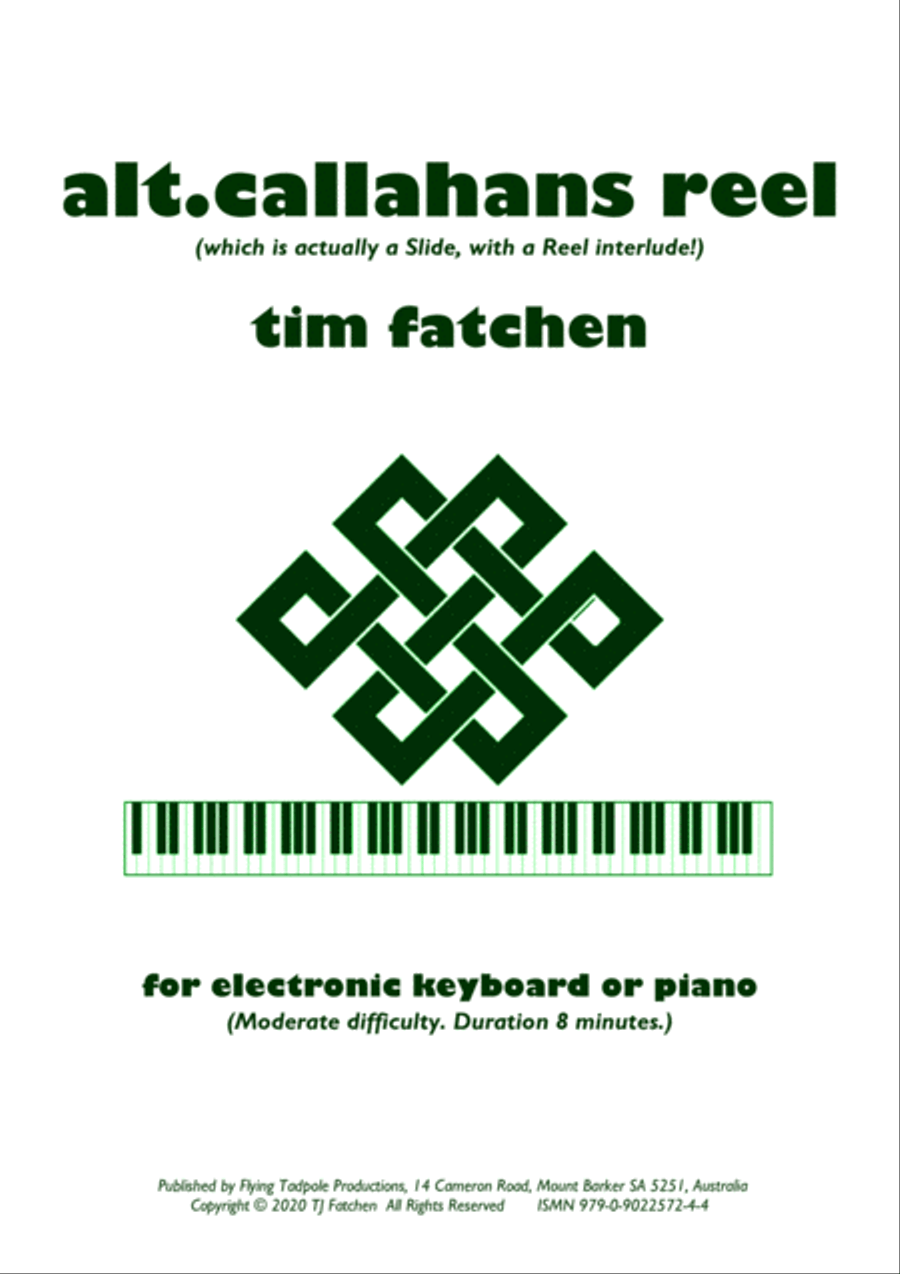Piano Solo - Level 4 - Digital Download SKU: A0.992361 Composed by Tim Fatchen. Celtic,Contemporary,Folk. Score. 15 pages. Flying Tadpole Productions #6210807. Published by Flying Tadpole Productions (A0.992361). ALT.CALLAHANS REEL(which is actually a Slide, with a Reel interlude!) Fast and lively foot-tapping neo-Celtic, at its best on electronic keyboard but also a fun piano solo. (Duration 8+ minutes) Reel Jiggery-pokery The song started as a jig but drank too much and reeled into 12/8 time. Properly speaking, despite its strong 4-beat pulse, it's a Slide. Or perhaps a Double Jig. Except for the mid-section, which is really a Reel! Needless to say, this is not for the purists...but it's huge fun for the rest of us! Playing and Performing We've marked it Advanced Intermediate. It's the indicated speed which makes demands! But you can play it slower and enjoy! On electronic or MIDI keyboard, use a percussive/plucked foundation (e.g. piano, harp, faux guitar) with a sustained string patch (string ensemble, synth strings, viola works well, fiddle works well, most violin patches are terrible!). For piano, you'll have to use more of the sustain pedal but not too much or it'll go all muddy on you, just like a mis-step in an Irish bog! (Original live and YouTube performances were on a Medeli MC 710, from 2005. This keyboard allowed splitting and dual voices. Piano was used as foundation both above and below the split point. A loud viola patch was used as the second voice on the upper part of the keyboard, as the dominant fiddle sound carrying the melody. A synth string patch was used as second voice on the lower half, giving the drones.) Add Your Own Salt and Pepper to the Score! The song is scored for clarity, not as a detailed demand for every possible nuance. It's fast, so although simple to look at when not playing, you'll need to be reading the music at speed. Unless, of course, you're blessed with a brilliant memory! So the score isn't cluttered with ornaments and fiddly bits, or lots of expression marks. Especially, it's not cluttered by a lot of suspended notes. BUT...you will need to suspend a lot of notes as you play. Think drones running all over the place and use your keyboard sustaining string patches to bring those drones out! Listen to the live recordings, they'll help. You, as player, have lots of freedom! It's up to you how many additional frills, or emphasis, or drone suspensions you throw in. Why alt.callahans?In the far distant past of 2005, there was an Internet newsgroup of that name, in honor and emulation of Callahan's Crosstime Saloon, a fictional bar with strongly community-minded and empathic clientele, part of the fictional universe of American writer Spider Robinson. [Wikipedia] A place for tall tales and true, comradeship, puns both good and bad. We had fun there, and this song came out of it. The Internet world, sadly, has changed since.
